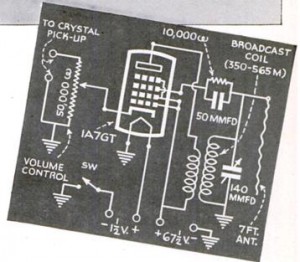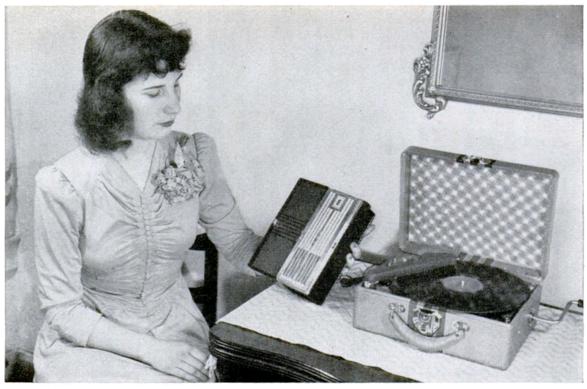In 1941, portable radios were becoming popular, and the June issue of Popular Science noted that “this summer there will be thousands of battery-operated portable radios in use on beaches, in parks, and on picnics and excursions everywhere. They will range from the camera-style midget or “personal” radios to the “twenty-pounders,” capable bringing in Europe on the short-wave band.”
To increase the versatility of any such set, the magazine showed how to make the battery-operated wireless phonograph shown here. “Phono oscillators” as they were sometimes called were fairly popular devices. They generally used only one tube to transmit the record audio to a nearby radio receiver. This was a cost-saving measure, since almost everybody owned at least one radio, and this scheme kept the parts count down. There was no need for a speaker or audio transformer. The record player described in this article simply followed the same concept in a portable. It used a single 1A7GT tube powered by a flashlight battery for filament voltage, and a 67.5 volt B battery. The other components included a standard plug-in coil for a receiver and a small variable condenser for tuning to an empty spot on the dial.
The phonograph motor and turntable was of the wind-up variety, which the article stated could be had secondhand for about $2.50. The entire player fir in a suitcase available for less than $1. Everything was mounted on a Masonite panel cut to fit snugly on top of the suitcase. An antenna wired of 7 feet was used, which was placed near the back of the radio. The article noted that this was legal because “the power of this transmitter is so small that it will not radiate signals beyond a few feet. It is the only type of transmitter that can be operated without a license under Federal Communications Commission regulations.”
Click Here For Today’s Ripley’s Believe It Or Not Cartoon
![]()

